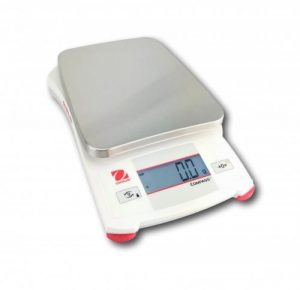Before using a digital scale:
- Make sure you know how to maintain it properly.
- Check for automatic energy-saving mode, Automatic temperature compensation, tire feature, and Maintenance of a digital scale.
- Follow these steps to ensure that your scale will work properly for years to come. You should also check for moisture on your fingers, affecting the results.
You can also use a sable brush to wipe the pan and paper towels to wipe out any liquid spills. For more information, visit www.instrumentchoice.com.au now.
Automatic energy-saving mode
 If you’re looking for a digital scale with energy-saving features, you’ve come to the right place. Several options are available, and some even have a built-in energy-saving mode. You can also find automatic temperature compensation and energy-saving mode. These options can save you money and power while maintaining a high level of accuracy. In this article, we’ll look at some of the important features of digital scales.
If you’re looking for a digital scale with energy-saving features, you’ve come to the right place. Several options are available, and some even have a built-in energy-saving mode. You can also find automatic temperature compensation and energy-saving mode. These options can save you money and power while maintaining a high level of accuracy. In this article, we’ll look at some of the important features of digital scales.
Automatic temperature compensation
An indicating scale can be designed with temperature compensation so that the measurement results are independent of the load applied to the scale. A regulating device changes the amplitude of the additional alternating current to compensate for the temperature change. The result is a temperature gradient ranging from small to large, depending on the load. The resulting temperature variation is small, but it’s noticeable. The indicating scale must compensate for temperature variations, or it will not be able to measure the load.
An IR communications package is available for this purpose. An IR communication package enables you to store your reading log and calibrate your refractometer from a computer, allowing you to transfer the data to any PC. The IR Communications Package can be a helpful tool for any laboratory, as it enables you to log your measurement data and transfer the result to a computer. This allows you to store data and analyze it later. For more information, visit www.instrumentchoice.com.au now.
Tare feature
A tare feature is an important and useful feature of a digital scale. These scales usually have a dedicated tare button that allows you to enter the tare weight of the container you’re weighing. It’s just as useful in a commercial setting as in a home. Read on to learn more about tare features and how they work. This feature is an excellent choice for business settings because it allows you to weigh objects accurately without including the weight of the container.
The tare feature will be very useful if you frequently weigh multiple objects in a single vessel. If you want to speed up your measuring process, taring your measuring cup after each is useful. Most scales offer a tare function, but many people are unsure which one they need. Using the tare button is the best way to ensure that your measurements are accurate and consistent. Once you’ve used the tare button, you can use the zero function to enter a new weight.
Maintenance of digital scale
Regular preventative maintenance is an essential part of maintaining an industrial scale, and this process can also help extend the life of the equipment. Routine Maintenance will ensure that your weighing instrument is operating at peak performance, and it will also save you time and money by reducing the need for repairs or replacements. In addition to preventative maintenance benefits, routine calibrations will ensure that your scale is functioning properly and accurately. This way, you can minimize downtime and ensure that your business does not suffer because of inaccurate results.
Regular Maintenance should include a periodic checkup of the scale’s junction boxes, module connection hardware, and wiring. Ensure to inspect the scale’s internal components for moisture or corrosion and the coating on the scale. The simplest way to check these parts is to lift them and remove them. Be sure to remove and inspect the paint if you can, as this acts as a barrier against corrosion. If you do notice a problem, fix it right away.
If you’re considering buying a digital scale, there are some important things to know before purchasing. First, a properly functioning scale should register the same weight every time it’s used, and it should return to zero as soon as you remove the object. If it doesn’t, there could be a problem with the scale’s load cell or mechanical parts. In such cases, it might need to be calibrated or replaced. To avoid such problems, select a suitable scale for the environment you’ll be using.
The first thing to consider is the type of weight measurement that your scale can provide. Most models use a strain gauge, a piece of foil that conducts electricity and is sensitive to deformation. When you weigh an object, this deformation alters the flow of electrical current in the strain gauge, transforming it into an accurate measurement. Once you’ve weighed an object on a digital scale, you’ll see exactly how much it weighs on the LCD. For more information, visit www.instrumentchoice.com.au now.
If you plan on using your scale for a scientific purpose, the accuracy of the readings will be crucial. This is why laboratory scales should be exceptionally accurate. The precise amounts of substances are essential for completing scientific experiments. As such, laboratory scales often come with a glass case around the measurement surface. This helps prevent any air currents from changing the measured mass. Furthermore, the glass case will help prevent a change in the measurement due to temperature differences.